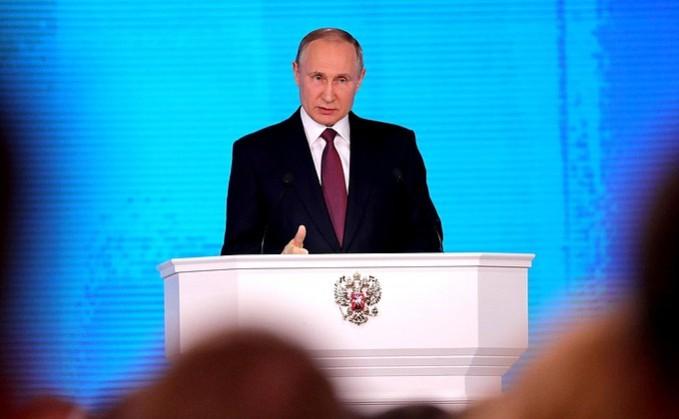The United States and Russia are perceived as the greatest superpowers with the most commanding military in the world and are constantly upgrading their weapons arsenal and defenses to maintain their supremacy. But the burgeoning advances in the hypersonic weaponry from the US rivals put the country's defenses at risk, which could challenge their strategic dominance.
In a recent address, Russian President Vladimir Putin demonstrated the country's advanced hypersonic weapons, rendering US defense systems useless. Russia is not alone in outpacing the United States with the development of hypersonic missile technologies. China also tested a similar system last year, which are expected to enter service soon. These deadly forces put US strategic dominance at risk.
Russia and its hypersonic weapons
During the State of the Nation address, Putin showcased computer animations and videos of the country's latest nuclear warheads, ranging from Avangard hypersonic vehicle, Samrat heavy intercontinental ballistic missile (ICBM) aka Satan 2, Kanyon nuclear torpedo with unlimited range, which was described as "doomsday weapon" by the Pentagon earlier this year, and Kinzhal high-precision air missile.

Speaking about its plethora of advanced weapons, Putin said they represent a quantum leap in the military technology and are impossible to intercept by an enemy. Russia also boasted that its new range of strategic nuclear weapons can render the US defenses useless.
"We aren't threatening anyone, we aren't going to attack anyone, we aren't going to take anything from anyone. The growing Russian military power will guarantee global peace," Putin noted.
China's hypersonic ambitions
While Russia's new weapons defy the US defenses, China has been in the race and leading the pack through its advanced weaponry.

Last November, the country tested its DF-17, which is intended for operational deployment using hypersonic glide vehicle as its payload. The missile system is expected to enter service around 2020. DF-17's low altitude flight makes it a challenge for even the world's greatest defense systems like the U.S. Terminal High Altitude Area Defense (THAAD) to intercept.
US' fading strategic dominance
The burgeoning hypersonic weapons stand to challenge the strategic stability of the world's greatest superpowers.
Gen. John Hyten, the four-star head of US Strategic Command, in an interview with CNN, said that the US defenses need to be urgently upgraded to detect the advanced high-speed hypersonic weapons that are being tested by rival superpowers.
"China has tested hypersonic capabilities. Russia has tested. We have as well. Hypersonic capabilities are a significant challenge," Hyten told CNN. "We are going to need a different set of sensors in order to see the hypersonic threats. Our adversaries know that."

The Pentagon is also working on concept interceptor missiles that can tackle several enemy attack missiles, a much-needed upgrade to the current US missile defenses which can only shoot a small number of missiles.
Given the current stature of US defenses, Thomas Karako, director of the Missile Defense Project at the Center for Strategic and International Studies, flatly responded with "Yes" when asked if the US is falling behind Russia and China on hypersonic weapons technologies, The Hill reported.
The US needs stronger forces to protect itself from Russian and Chinese weapons, Hyten said, addressing the Senate Armed Services Committee.
"I believe we need to pursue improved sensor capabilities to be able to track, characterize and attribute the threats, wherever they come from. And, right now, we have a challenge with that, with our current on-orbit space architecture and the limited number of radars that we have around the world. In order to see those threats, I believe we need a new space sensor architecture," Hyten was quoted as saying by The Hill.














